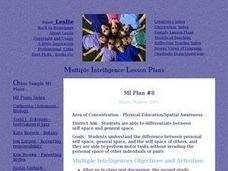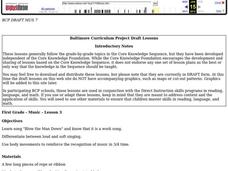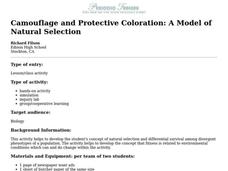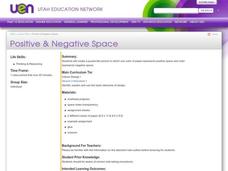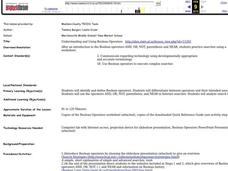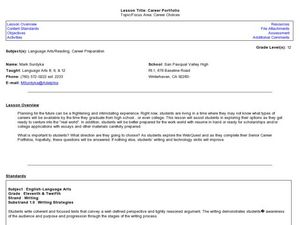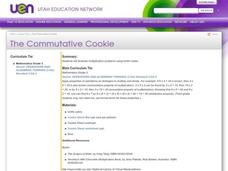College Board
Civic Knowledge and Action: Voter Registration
What does the data say? Using provided voter data from the 2016 presidential election, scholars describe the data and identify questions they could answer by analyzing it. Learners then construct tables and use them to determine whether...
Curated OER
Three Part Dialogue
Eighth graders write a three part dialogue as part of an effective memoir. In this three part dialogue lesson, 8th graders are given two parts of a dialogue and emotions that accompany the words. Students then create the third part of...
Curated OER
Self Space
Second graders investigate how to differentiate between self-space and general space of themselves and others.
Curated OER
Be a Detective - Is it a Letter or a Word?
Students identify and differentiate letters and words.
Curated OER
Music
Third graders learn the song "Blow the Man Down" and know that it is a work song. They differentiate between loud and soft singing. They use body movements to reinforce the recognition of music in 3/4 time.
Curated OER
Camouflage and Protective Coloration: A Model of Natural Selection
Students investigate natural selection and differential survival among divergent phenotypes of a population. Using everyday items , they model adaptations of camouflage and protective coloration in two very different environments.They...
Curated OER
Mined or Grown?
Sixth graders differentiate between raw materials that are cultivated and those that are mined. They collaborate with their eighth grade peers to learn more about the mining complexities at the end of their mineral identification unit.
Curated OER
Positive & Negative Space
Pupils review and differentiate between positive and negative space, view teacher sample, and cut out shapes to create puzzle-like picture in which one color of paper represents positive space and one color represents negative space.
Curated OER
Understanding and Using Boolean Operators
Students identify and define Boolean operators. They differentiate between operators and their intended uses. They use the operators AND, OR, NOT, parenthesis, and NEAR in Internet searches and analyze search results. They use...
Curated OER
Career Choices
Students work in groups to brainstorm ideas about different jobs they could have in the future. In this careers lesson plan, students learn about careers, brainstorm what they could do, take a survey, and differentiate between...
Curated OER
Learning Types of Editorials - and Writing Some
Students recognize and differentiate between the three types of editorials in order to write editorials for the school newspaper. In this editorials instructional activity, students read example persuasive and interpretative editorials....
Alabama Learning Exchange
Diverse Life Forms of the Ocean
Students recognize marine organisms and differentiate between plankton and nekton. In this investigative instructional activity students create a concept map using their list of terms and study marine life forms.
Pennsylvania Department of Education
Adding and Subtracting Three-Digit Numbers by Jumping
Second graders use data to graph information and draw conclusions. In this instructional activity on data analysis, 2nd graders practice gathering, sorting, comparing, and graphing data. Students differentiate data that can and cannot...
Curated OER
Response to Literature: Anecdotal and Saga Memoir Poems
Young scholars differentiate between anecdotal and saga memoir poems. In this response to literature instructional activity students analyze poems written by others then analyze incidents from their own lives to determine whether they...
Curated OER
Pendulum
Sixth graders are instructed on how to create a pendulum and measure the periodicity of the pendulum, using four different combinations of string. They are asked which influences the time more- the length of the string or the weight at...
Curated OER
Microsoft Word Lesson 2
Fourth graders investigate some of the basic functions of using Microsoft Word. The teacher uses a LCD projector to give instruction and guide the lesson. They practice finding the menu screens to perform basic editing and command...
Curated OER
Microsoft Word~About the Author
Fourth graders investigate how to create a document named "About The Author". The teacher uses a LCD projector to guide the instruction and provide examples for the class. They also include graphics in the document and practice accessing...
Curated OER
The Commutative Cookie
Third graders investigate the commutative properties of multiplication and focus upon the setting of cubes in the correct patterns to solve problems. They differentiate between numbers that have multiple factors and prime numbers....
Curated OER
AP Biology Lesson Outline
Ninth graders research the different field of bioengineering. In this biology lesson, 9th graders differentiate meiosis and mitosis. They discuss the pros and cons of using radiation in medical diagnostics.
Curated OER
Determining The pH Of Common Substances
Students use a pH indicator to measure the pH of some fruits, common beverages, and borax. Students discover how to differentiate between an object that is an acid or a base.
Curated OER
Problem Solving
Second graders observe and demonstrate how to differentiate between necessary and unnecessary information as it relates to math word problems. They discuss the stoplight method, read word problems and observe how to use the stoplight...
Curated OER
Identify Plant Nutrient Requirements
Young scholars are given standard elemental nutrients, identify plant nutrient requirements based on criteria outlined in assessment instructment. They, are given standard elemental nutrients, provide all means and chemical symbols of...
Curated OER
What do we know about Iraq?
Students develop viewpoints on world issues and concerns. Students review facts on historical time periods. Students compare past happenings to present situations in history. Students differentiate between various forms of ethnic...
Nazareth College
Create Your Own Tornado
Third graders identify key concepts and definitions about tornados. They work in small groups of three to four to create mini-tornados. After reading Tornado Alert as a class, 3rd graders discuss tornados and fill out a KWL chart.




